The Evolution of the PlayStation Controller
The PlayStation 5 controller has been unveiled. The DualSense looks impressive, but how does it stack up to what has come before?
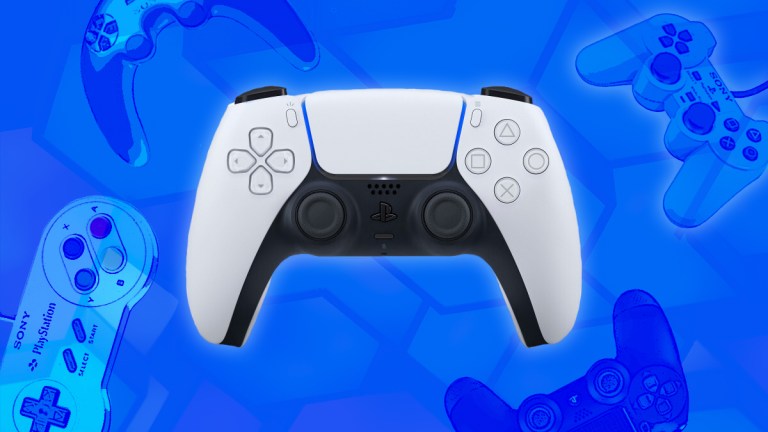
The reveal of the PlayStation 5’s controller isn’t just a major moment in the next-gen console war but a significant part of PlayStation history. Few features have defined the PlayStation brand as much as its controllers. Sony has spent years perfecting the PlayStation controller and giving it a design that’s instantly recognizable to millions of gamers across the world. You could spot a silhouette of the PlayStation controller and know exactly what you’re looking at.
Yet, there may be a few members of the PlayStation controller family that you’re not familiar with. More importantly, there may be things about the making of your favorite PlayStation controller that you never knew before.
So, in celebration of the reveal of the DualSense, let’s take a look at the proud, fascinating, and sometimes strange history of PlayStation controllers:
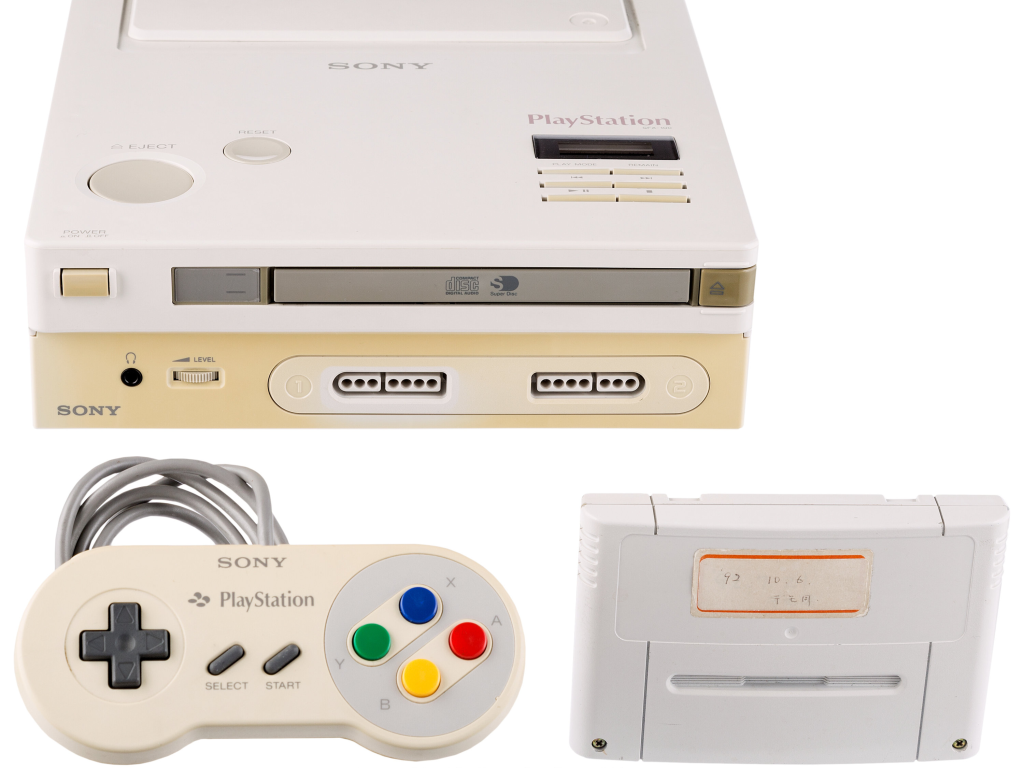
The Nintendo PlayStation Controller
The Nintendo PlayStation is arguably the most famous video game console that was never released. It was supposed to be a Super NES/Super Famicom hybrid with CD-ROM capabilities that would have represented the beginning of a partnership between Sony and Nintendo in the ’90s. However, when Nintendo ended up siding with Phillips for the development of Nintendo CD-ROM technology, Sony was left with about 200 Nintendo PlayStation prototypes and the burning desire to pursue the development of its own console under the PlayStation name.
While this particular controller is a controversial inclusion on this list (as you can see, it’s really just a SNES controller), the appearance of the PlayStation name on the controller certainly makes it worth a mention. As we’ll soon see, the SNES controller design may have also played a role in the development of what would come next.
As for the Nintendo PlayStation, an incredibly rare working model of the prototype recently sold at auction for $300,000 (closer to $400,00 with the buyer’s fee). Theoretically, 199 models of the prototype are still out there somewhere, but it’s not known if they’re in any kind of recognizable condition.
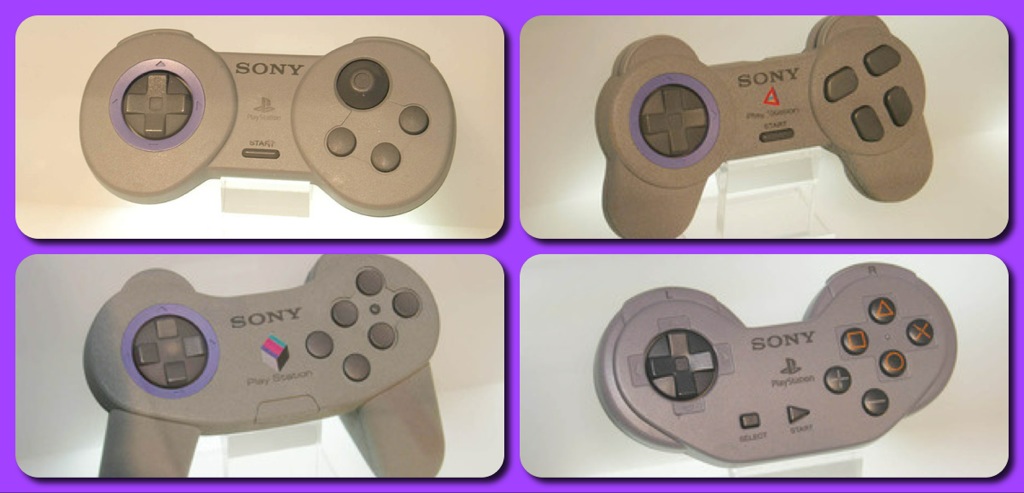
The PlayStation Prototype Controllers
Before we get to the “official” models, let’s briefly discuss some of the prototype designs that Sony played with before eventually debuting the PlayStation controller you all know and love.
The evolution of the PlayStation controller tells a story of experimentation vs. traditionalism. Earlier models seemed to use the SNES design as a kind of base concept, but later versions of the controller featured some entirely new design concepts. Interestingly, we even see what appears to be an early joystick concept and two models that featured an input button layout that resembles what we’d ultimately get from the face buttons on the N64.
One thing you’ll notice in a larger photo of the various PlayStation controller prototypes is Sony’s commitment to a two handle, slightly larger controller design that more naturally fit into people’s hands. It’s a design choice that would shape the company’s controller designs for years to come.
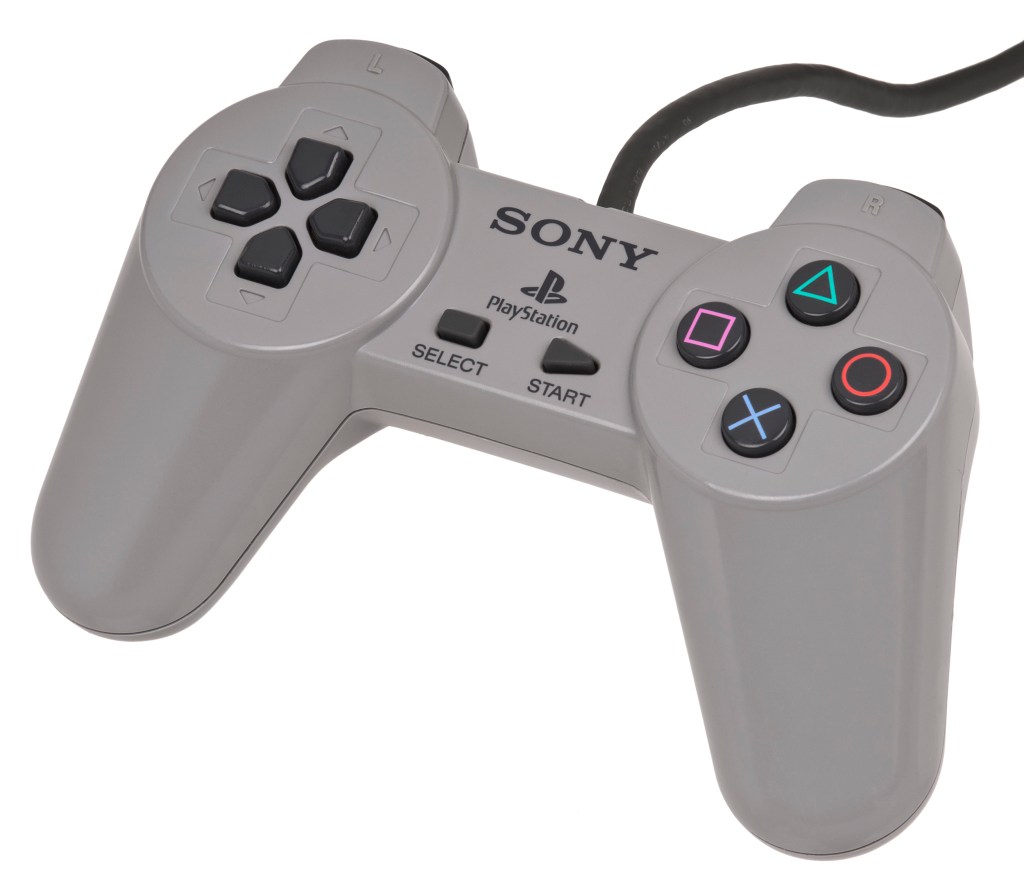
The Original PlayStation 1 Controller
Ken Kutaragi, former chairman and CEO of Sony Computer Entertainment, once said that Sony probably spent as much time on the PlayStation’s controller as it did on the design of the console itself. The company was especially interested in creating a controller that felt good in whatever position you were playing in and wasn’t too heavy.
Sony’s innovative additions to traditional controller design helped forever change the way we game. The first major addition was an extra set of shoulder buttons. These shoulder buttons not only gave developers and players a bit more flexibility in terms of button layout but also emphasized the controller’s grip handles, which made it easier for players to use the new buttons. Not only would we see a similar design in future PlayStation controllers but in many controllers that would follow.
This is also the controller that introduced the iconic Square, Triangle, Circle, Cross button layout for PlayStation controllers. According to PlayStation controller designer Teiyu Goto, the circle and cross were meant to convey “Yes” and “No” while the triangle represented point of view and the square was intended to be a kind of menu button.
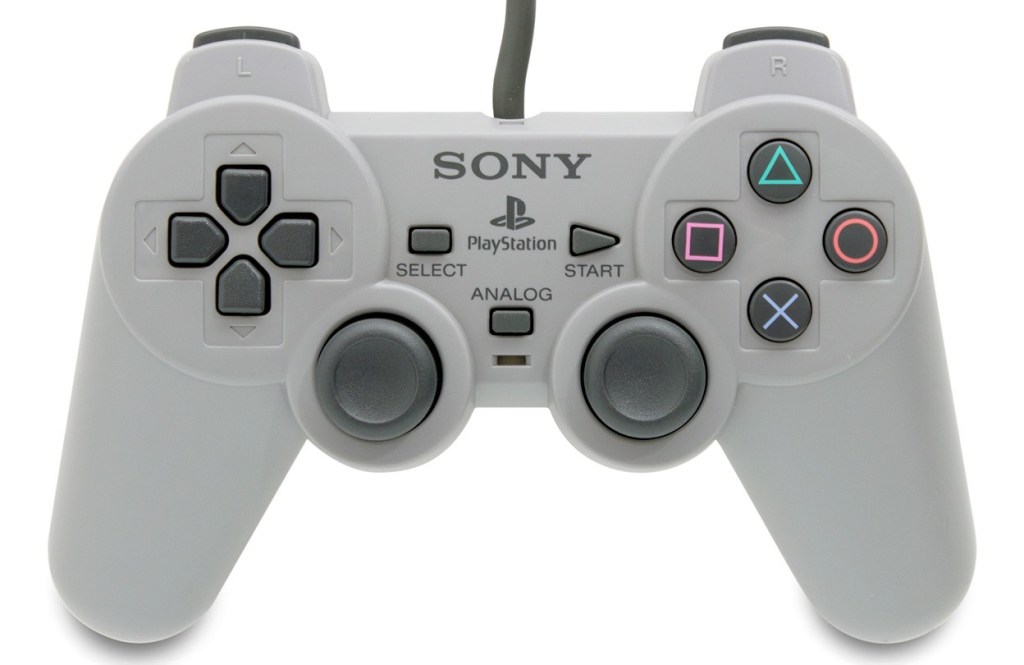
The PlayStation 1 Dual Analog Controller
The Dual Analog Controller is both the most important and least important controller in PlayStation history. This was the controller that introduced dual analog sticks to the PlayStation brand.
At the time, the idea of a controller with dual sticks was so odd that Sony added a button that would allow you to choose whether to enable the analog controls. Even the N64 only featured one joystick, and games like Mario 64 were basically designed as elaborate ways to introduce console gamers to that concept. Some PlayStation games wouldn’t even function properly if analog controls were enabled.
The basic design of the Dual Analog Controller is revolutionary, though. Pretty much every PlayStation controller that followed would resemble this controller in some way, and there’s no question that other companies also borrowed elements from this design.
The Dual Analog Controller was discontinued about a year after its introduction. But to this day, many people confuse this controller for the next controller on this breakdown.
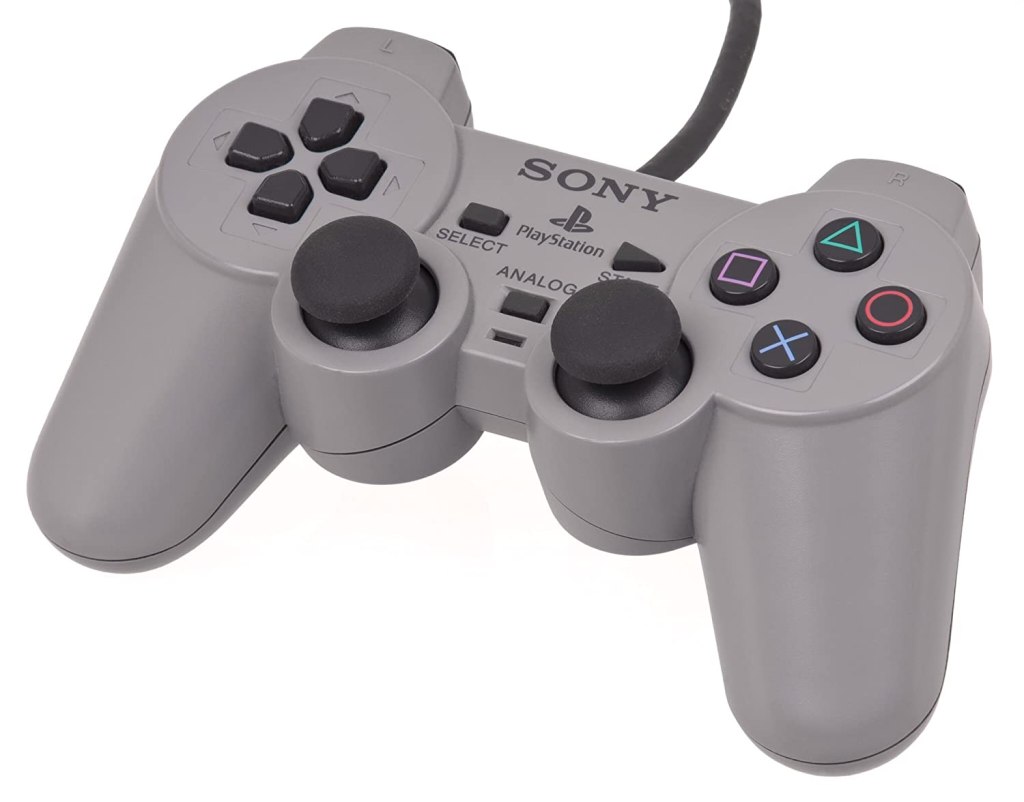
The PlayStation DualShock Controller
Sony’s DualShock controller was essentially a Dual Analog controller that vibrated. Rumble technology was such a big deal at that time that this model basically killed the Dual Analog controller as soon as it was introduced.
So why didn’t the Dual Analog have rumble capabilities? Rumors suggest that Nintendo tried to legally block Sony from producing such technology, but Nintendo denies that was the case. It’s also been suggested that Sony just hadn’t found a way to incorporate rumble in a way that was comfortable, cost-efficient, and reliable.
Regardless, the DualShock controller quickly became Sony’s peripheral of choice. Titles like Crash Bandicoot 3 and Spyro the Dragon heavily emphasized its capabilities while 1999’s Ape Escape infamously required players to use a controller with analog sticks. Even Capcom re-released the original Resident Evil with analog support.
This is quite simply one of the most important video game controllers ever made. It was so well-designed that Sony would essentially build on its design for the next three gaming generations.
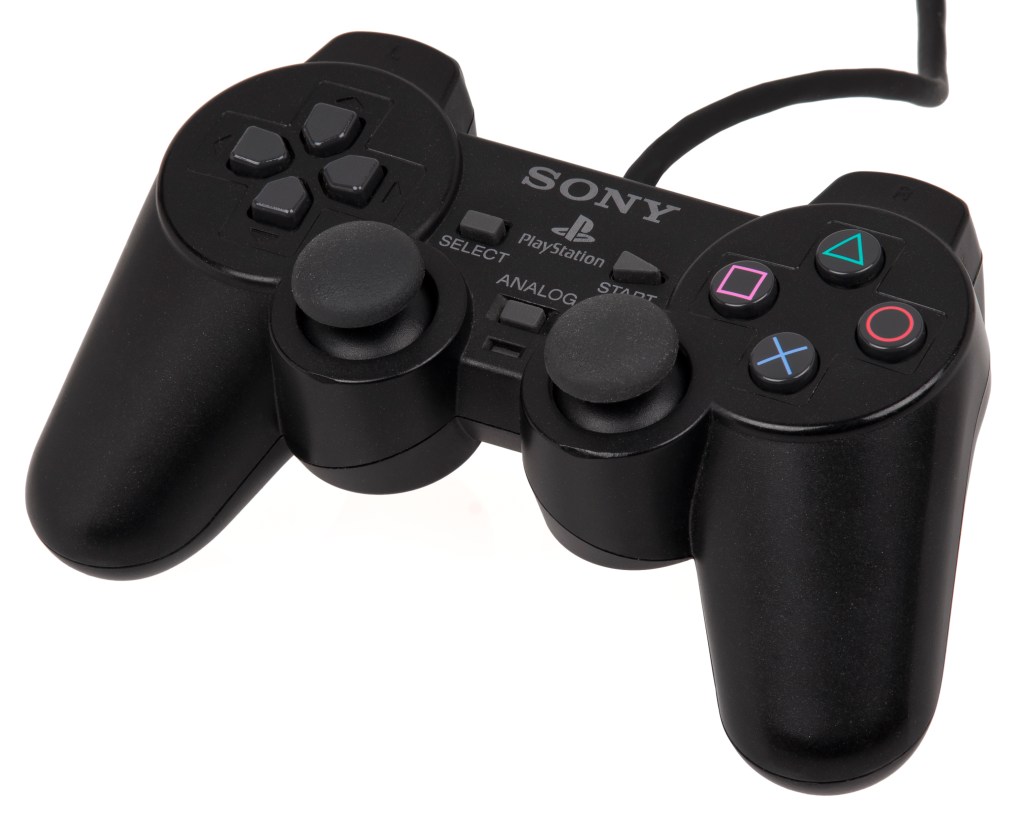
The DualShock 2
While Sony reportedly played with a few new concepts for the PlayStation 2 controller, the company ultimately decided on something that was both familiar and subtly revolutionary.
The DualShock 2 was basically a DualShock controller. It even retained the analog enable button. While most of the design differences between this controller and the previous model are slight cosmetic alterations, there are actually a few things that separate the DualShock 2 from what came before.
The most notable of those differences is the DualShock 2’s pressure-sensitive buttons. This feature gave players the ability to do things like softly apply the gas in Gran Turismo as opposed to putting the pedal to the floor every time.
More importantly, the DualShock 2 offered a familiar but exceptional controller experience at a time when new consoles were basically expected to launch with entirely re-imagined controllers. Considering that the PlayStation 2 remains the best-selling console ever, we suppose Sony made the right decision to stick with what worked. But that doesn’t mean Sony didn’t experiment with other designs for later consoles…
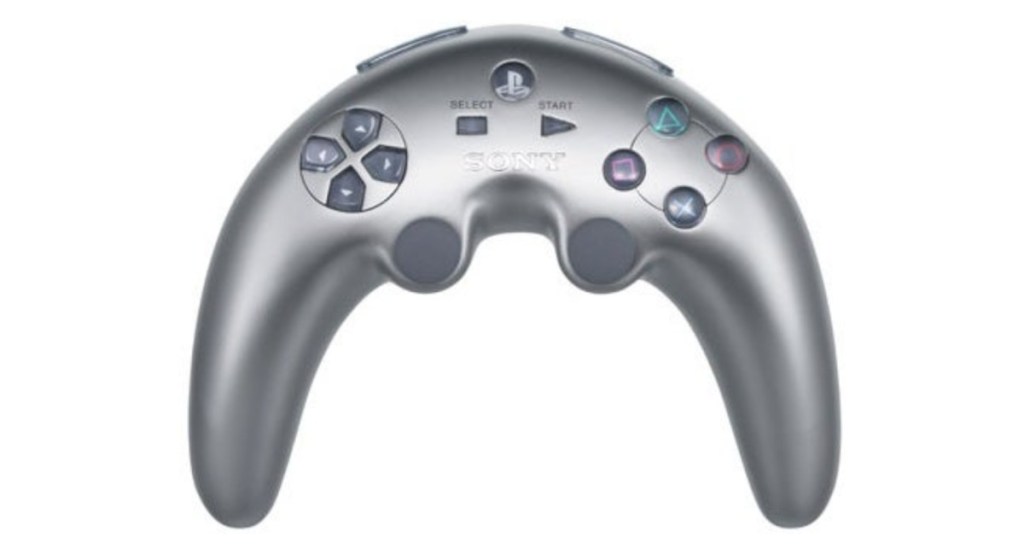
The PlayStation 3 Boomerang
When the PlayStation 3 was unveiled at E3 2005, it was accompanied by a new controller that drew quite a bit of attention both negative and…well, most of it was negative. Despite all the talk the controller attracted, Sony said almost nothing about this “boomerang” design during that E3 presentation.
We later learned that this controller was just a design mock-up. Due in part to the largely negative reception, Sony ultimately elected to go back to the classic PlayStation controller design.
But why did Sony show off this controller in the first place? Well, some believe that its odd shape was intended to emphasize the PlayStation 3’s motion control capabilities. That’s never been confirmed, but it would explain a lot. While it doesn’t look particularly comfortable to use in the traditional sense, you can see how its shape might actually work well for motion control purposes.
Unfortunately, this wouldn’t be the last time the pursuit of motion controls would negatively impact the design of a PlayStation controller.
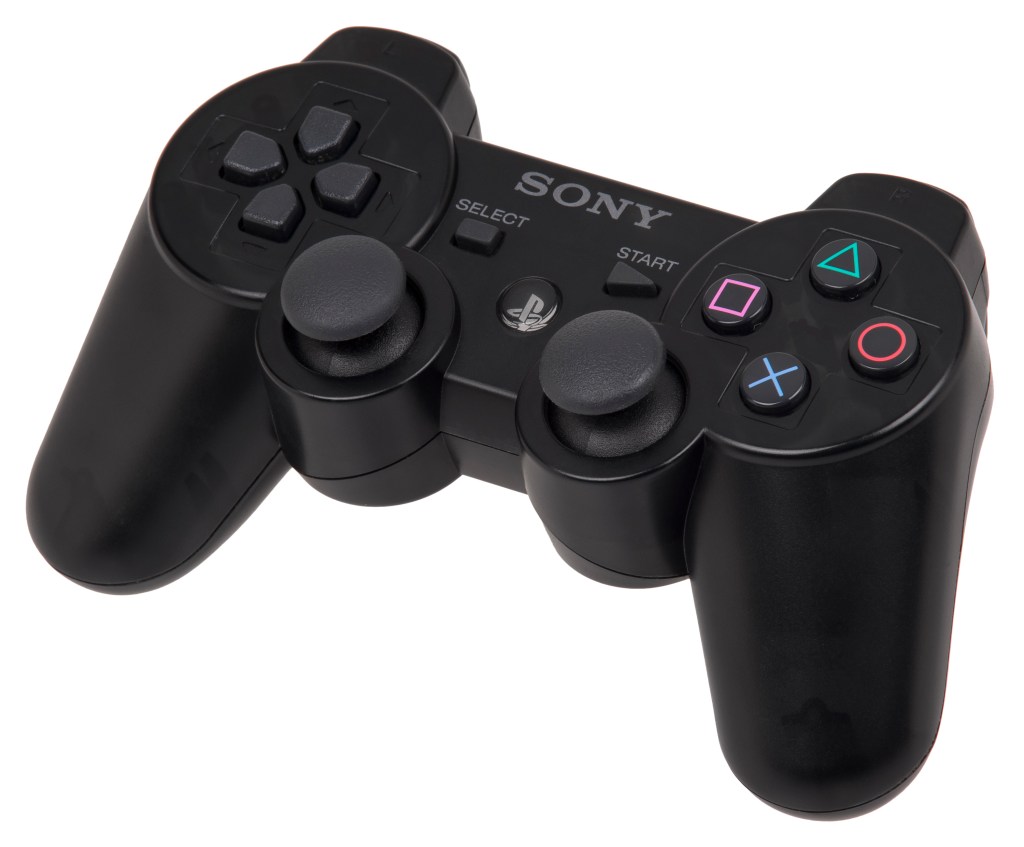
The Sixaxis
The Sixaxis derives its name from the idea of “six axis” motion controls which were supposed to offer this controller six degrees of motion freedom. As you may know, the PlayStation 3’s motion control capabilities never really came into fruition as the few games that utilized them didn’t really work that well. Unfortunately, that’s really just the beginning of this controller’s problems.
Due to an ongoing lawsuit, Sony couldn’t ship the PlayStation 3 controller with rumble capabilities. As a side-effect of that exclusion, the original Sixaxis felt notably lighter than other PlayStation controllers. Hilariously, former Sony executive Phil Harrison once tried to dismiss the importance of rumble by saying that vibration was a last generation concept and that motion controls were the future. More on that later.
While the Sixaxis benefited from that basic old-school PlayStation controller design and introduced some welcome innovations (such as a somewhat limited wireless play mode, redesigned shoulder triggers, and a jewel button), its failed motion controls and lack of vibration technology burdened it with a controversial legacy.
The Sixaxis would linger on in some regions after the launch of the PlayStation 3, but it would soon be replaced with a new model.
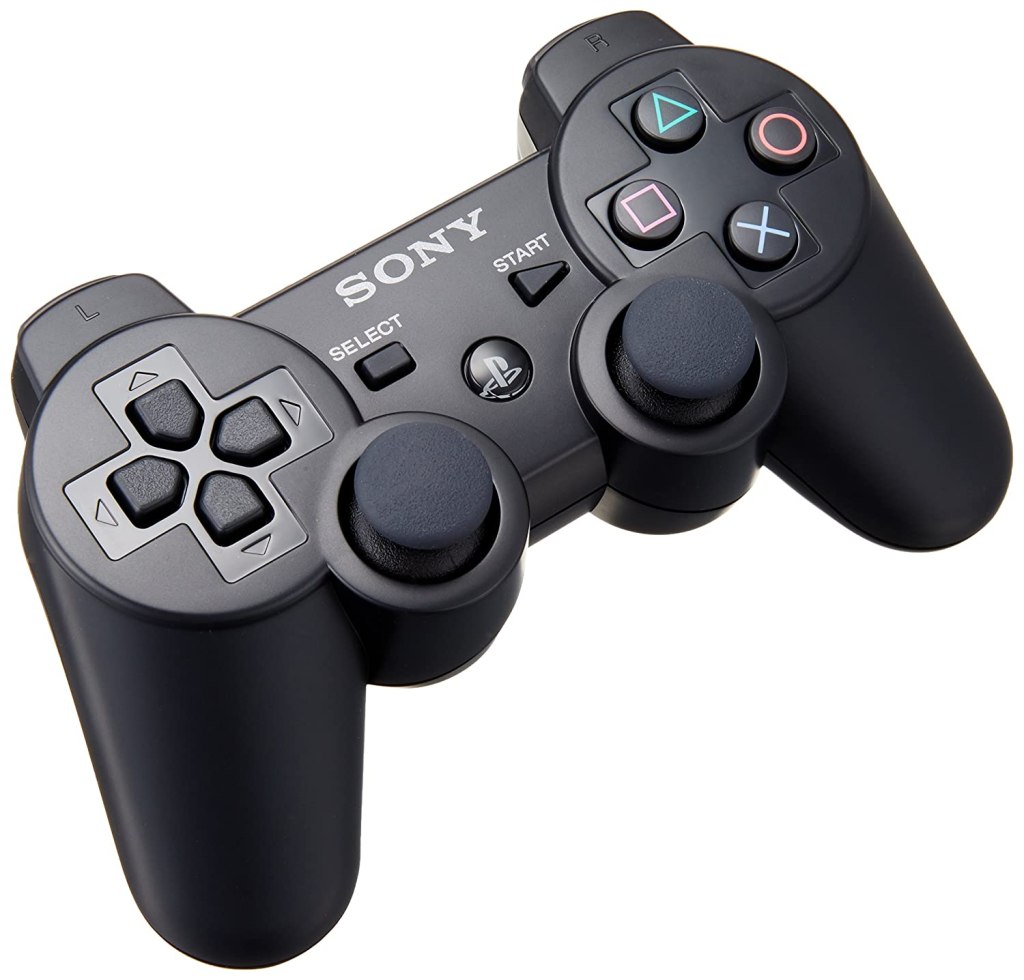
The DualShock 3
To be honest, the DualShock 3 isn’t that different from the Sixaxis outside of its rumble features and a modified battery. However, it’s still an important part of PlayStation history.
At a time when the PlayStation 3 was struggling after a rough launch, increased competition, and a price tag deemed too high, the DualShock 3 helped Sony right the ship a little bit. It was familiar, well-made, and as it turns out, people really did miss that rumble feature.
The DualShock 3 offered stability when Sony and PlayStation fans needed it the most. It also cemented the power of the DualShock brand and confirmed that Sony had gotten its controller right so many years ago.
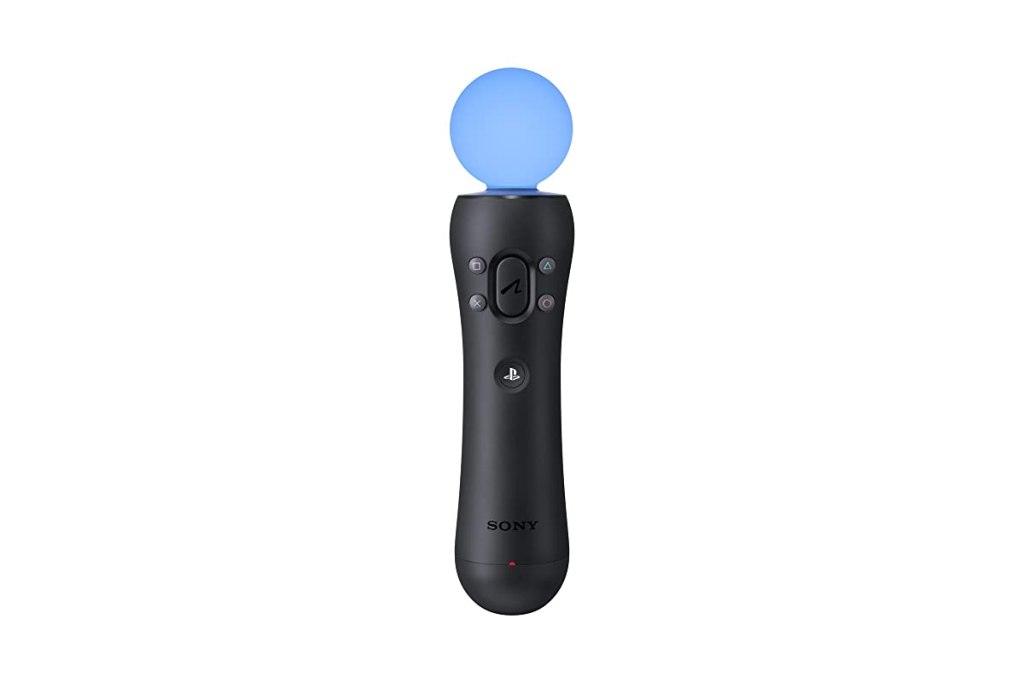
PlayStation Move
Before we move on to the PS4, we’ve got to talk about a controller that not only stands as one of the most short-sighted design concepts in PlayStation history but is just…strange.
The PlayStation Move was Sony’s answer to the Nintendo Wii. Well, technically, it was its second answer after the failures of the Sixaxis controller and the motion technology of the same name. It slightly resembled the Nintendo Wii controllers, but it featured a few technological advancements as well as integration with the PlayStation Eye camera.
While this controller was actually well-designed for what it does, it failed to find a sizable market. There just weren’t that many worthwhile games that supported the PlayStation Move, and Sony (like other companies) massively overestimated the appeal of the motion control.
Worst of all, the PlayStation Move was an example of how Sony chased trends in an effort to turn the reputation of the PlayStation 3 around. As we’ll soon see, such pursuits went against what has historically made PlayStation controllers so successful.
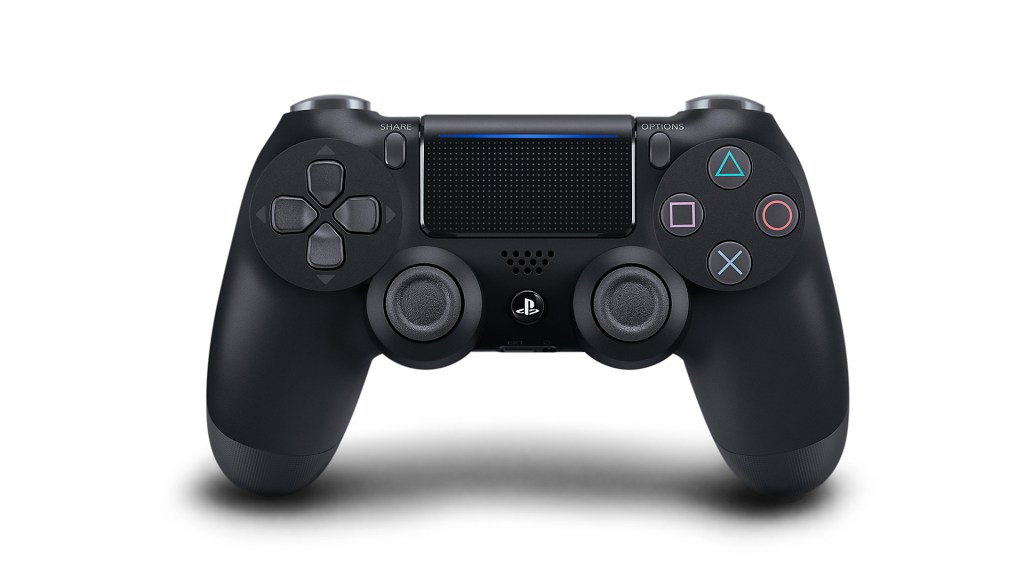
The DualShock 4
The struggles of the PlayStation 3 and the controversial reception to the bold ideas of the Xbox One are two things that encouraged Sony to keep things simple with the PlayStation 4, which was designed to emphasize what had worked for the band in the past.
Nowhere is that focus more evident than in the design of the DualShock 4. In many ways, it very closely resembles previous DualShock controllers. The basic design of the DualShock just hasn’t changed that much since the first version launched in 1997.
Yet, this particular controller features a variety of improvements that represent everything that Sony has learned over the years. Its L2 and R2 buttons are more accessible and “trigger-like,” the controller benefits from a Share button optimized for the social media age, and it includes a touchpad that is sometimes handy but is mostly used as a way to more easily access in-game menus.
The DualShock 4 features some lovely alterations, but at the end of the day, it’s really just a tribute to the core concepts of the PlayStation controller and the staying power of this particular gaming innovation.
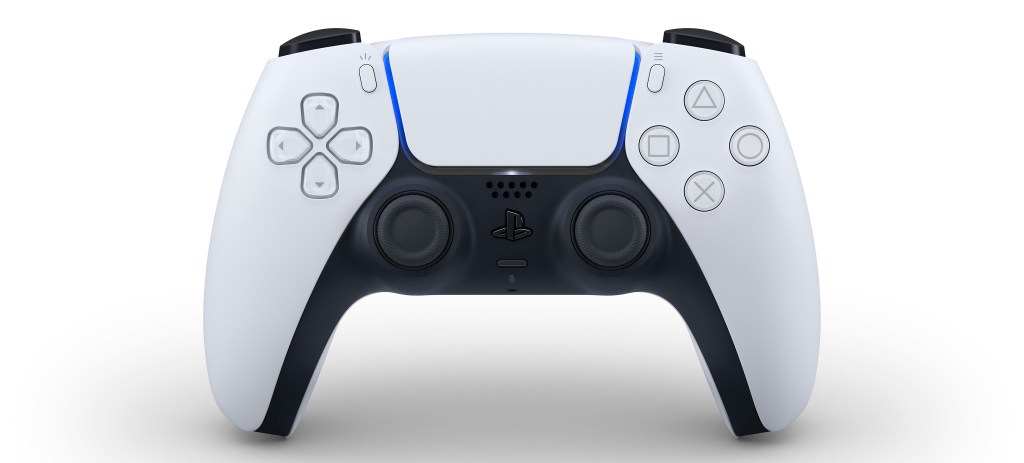
The DualSense
With the PlayStation 5, Sony is moving beyond the DualShock line for the first time since the release of the Sixaxis. But unlike that controller, the DualSense doesn’t initially seem to be that much of a departure from what came before.
Yes, it does include some welcome new features (such as adaptive triggers, advanced haptic feedback, and a built-in microphone), a new color scheme, and the long-awaited addition of a USB-C port, but at the end of the day, it will probably feel familiar to anyone who has held a PS4 controller.
So why does Sony refer to it as a “radical departure?” Some of that is likely just marketing, but in other ways, the DualSense is a radical upgrade for Sony.
For a company that has long relied on the advantages of having a standard controller design that most people can instantly recognize and feel comfortable with, even the fact that the company is offering something different feels like a big deal. Changes aside, Sony’s historically consistent controller design over the years leaves us feeling confident in the DualSense’s ability to further what has been a pretty positive legacy.


